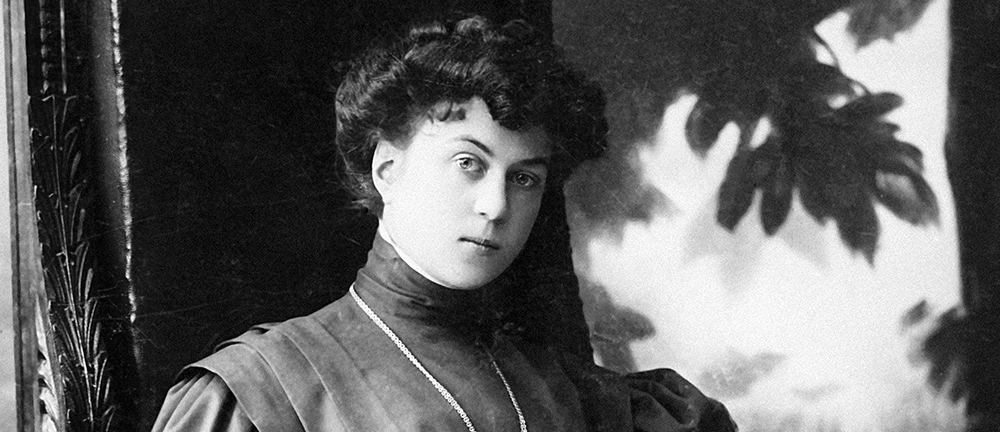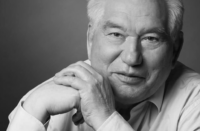Alexandra Kollontai, born 150 years ago on 31 March 1872, was an outstanding figure in the Russian communist movement.
Kollontai’s active political work began with workers’ evening classes, through which she became part of the Political Red Cross, an organisation supporting political prisoners. She participated in leafleting and fund-raising campaigns in support of a mass strike in the textile industry, an experience that consolidated her certainty of the need for proletarian revolution. In 1899 she joined the illegally operating Russian Social Democratic Labour Party.
In 1905 she began to turn actively to the women’s question. Her work The Social Basis of the Woman Question was the first major exposition by a Russian Marxist on the subject. In it she not only advocated the overthrow of the capitalist system but also explained the need to restructure the family itself in order to achieve true emancipation.
Like many Russian socialists, Kollontai remained neutral during the split between Bolsheviks and Mensheviks in 1903. In 1904 she joined the Bolshevik faction and gave courses on Marxism for them. In 1905 she joined Trotsky and in 1906 left the Bolsheviks over the question of boycotting the elections to the undemocratically elected Duma, where she believed it was nevertheless possible to stand up for left-wing demands and expose the government’s machinations.
Between 1900 and 1920 Kollontai was considered the RSDLP’s leading expert on the “Finnish question.” She wrote two books and numerous articles and was an adviser to RSDLP members in the Tsarist Duma as well as a liaison with Finnish revolutionaries. In 1908, when she advocated Finland’s right to armed insurrection against the Tsarist Empire, she was forced into exile.
In 1918 she resigned as commissioner for social affairs in the Soviet government in protest against the Treaty of Brest-Litovsk. The treaty meant the loss of large European territories, including Finland and Ukraine, for Soviet Russia. With this position she opposed Lenin, for whom peace was a priority.
From the end of 1908 until 1917 Kollontai lived in exile. In the period before the First World War she travelled to the United States, Britain, Denmark, Sweden, Belgium, and Switzerland. In Germany she met Liebknecht, Luxemburg, and Zetkin, whose work on women’s rights she greatly admired.
Long before the war Kollontai began to agitate tirelessly against the threat of war and became involved in the anti-war movement in Germany and Austria. She was in the Reichstag when the war credits were voted for in August 1914. Devastated, she left Germany for Sweden, where she was imprisoned for anti-war propaganda. After her release, in February 1915, she went to Norway, where she served as a link between Switzerland, where Lenin and the Central Committee were staying, and Russia.
In June 1915 she broke with the Mensheviks and officially joined the Bolsheviks. In September 1915 she was centrally involved in the organisation of the Zimmerwald Peace Conference. Her paper “Who Needs the War?” (1915) was translated into several languages and circulated in millions of copies.
With the outbreak of the February Revolution in 1917 Kollontai returned to Russia and advocated a clear policy of non-support for the provisional government. She was elected a member of the Central Committee of the Petrograd Soviet. She continued to agitate for revolution in Russia and began her involvement with the Bolshevik women’s newspaper Rabotnitsa (Woman Worker), urging the Bolsheviks and the trade unions to pay more attention to the organising of women workers.
After the revolution Kollontai was elected commissar for social affairs in the new Soviet government. She comments: “In my opinion the most important accomplishment of the People’s Commissariat, however, was the legal foundation of a Central Office for Maternity and Infant Welfare.”
In 1918 Kollontai opposed the ratification of the Treaty of Brest-Litovsk and resigned from the government so as not to jeopardise the unity of the Commissariat by her opposition on such a crucial question. She remained active as an agitator and organiser, however, and played a central role in organising the First All-Russian Congress of Women Workers and Peasants, serving in leading posts and in 1919, together with Inessa Armand and Nadezhda Krupskaya, founding the Women’s Committee (Zhenotdel) of the Communist Party. This directed its work towards improving the living conditions of women throughout the Soviet Union, combating illiteracy and educating women about the new marriage, education and labour laws.
In Soviet Central Asia the Zhenotdel sought to improve the lives of Muslim women through literacy, education, and “unveiling” campaigns. In November 1920 the Zhenotdel also introduced the legalisation of abortion for the first time in history.
In 1921 Kollontai came into conflict with the Communist Party and Lenin directly when she publicly declared her support for the Workers’ Opposition, a grouping against party centralism. The group was dissolved, and Kollontai remained in critical opposition within the party.
In 1922, at her own request, she entered the Soviet diplomatic service, first in Norway, then in Mexico, then again in Norway and Sweden. She comments: “I set myself the task of effecting the de jure recognition of Soviet Russia and of re-establishing normal trade relations between the two countries, which had been broken by the war and the revolution . . . On 15 February 1924, Norway in fact recognised the USSR de jure.”
Alexandra Kollontai also acted as a negotiator of the Finnish-Soviet peace treaty of 1940 and served the USSR with great sensitivity. Until her retirement in 1945, on health grounds, Kollontai lived abroad as a diplomat. Thereafter, and until her death on 9 March 1952, she served the Soviet Foreign Ministry as an adviser.






